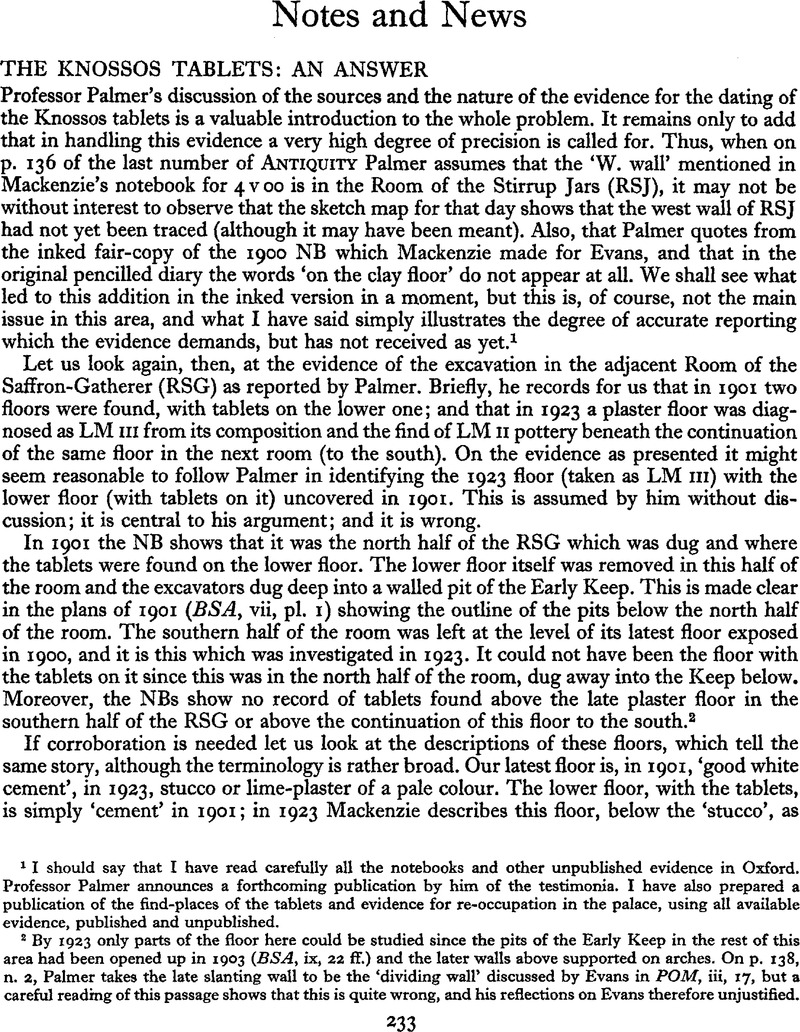Article contents
The Knossos Tablets: An Answer
Published online by Cambridge University Press: 02 January 2015
Abstract

- Type
- Notes and News
- Information
- Copyright
- Copyright © Antiquity Publications Ltd 1961
References
1 I should say that I have read carefully all the notebooks and other unpublished evidence in Oxford. Professor Palmer announces a forthcoming publication by him of the testimonia. I have also prepared a publication of the find-places of the tablets and evidence for re-occupation in the palace, using all available evidence, published and unpublished.
2 By 1923 only parts of the floor here could be studied since the pits of the Early Keep in the rest of this area had been opened up in 1903 (BSA, ix, 22 ff.) and the later walls above supported on arches. On p. 138, n. 2, Palmer takes the late slanting wall to be the ‘dividing wall’ discussed by Evans in POM, iii, 17, but a careful reading of this passage shows that this is quite wrong, and his reflections on Evans therefore unjustified.
3 Passages cited by Palmer, p. 136. In case the word ‘Mycenaean’ misleads it should be remembered that the term ‘Minoan’ had not then been invented, and the whole structure at Knossos was called Mycenaean.
4 Palmer, p. 136, is right to say that neither Evans nor Mackenzie hinted at stratification in their sketch plans of the area. Add that in none of the NBs of these years is stratigraphy shown in plans, or sections drawn.
5 The vases are shown in photographs taken in 1900. Some have been identified in Crete by my colleague, Mr Popham, in April of this year. They are among a large number of such vases, all of which are intact and unburnt.
6 Mr V. E. G. Kenna has recently studied again the sealings in Crete and wholly agrees with this dating. The argument is not a circular one since it depends on independent dating evidence from other sites. Unless, that is, it is argued that LM 11 vases and other objects were being made at the end of LM 111 b, a suggestion which does not warrant an answer.
7 It will be realized that it is convenience only that prompts the term ‘LM 11 destruction’, since the debris contains much of the earliest LM 111 style. Arguments from the record of ‘LM 111’ pottery (as Palmer, p. 139) in the Stratigraphical Museum can only be admitted when the pottery is re-examined, since the period is a long one (perhaps 200 years) and the destruction at Knossos happened some time after its start. Mr Popham has made some important observations on such dating after studying the boxes.
- 1
- Cited by




